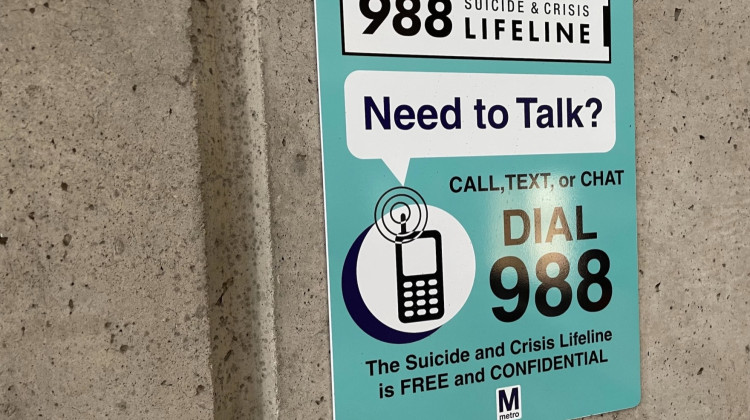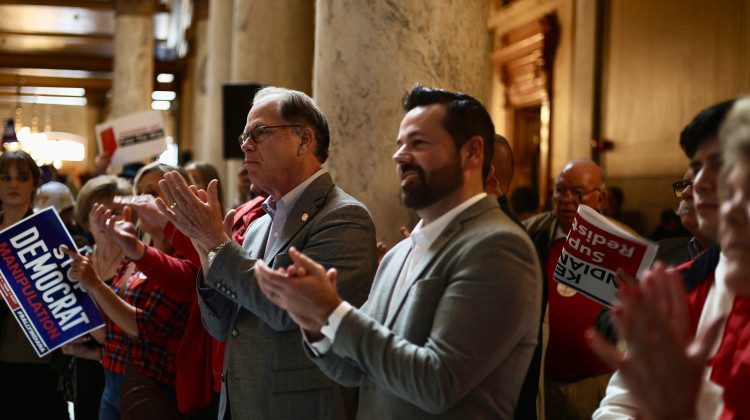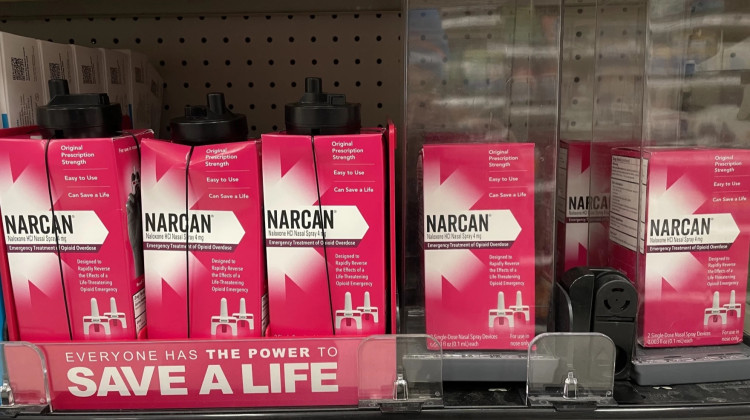
The 988 crisis line is celebrating its second year of nationwide service. Here’s how local much local states are using the number.
Ryan Levi / TradeoffsThere’s a short number people can call if they have a mental health crisis — that is 988. The crisis hotline, which replaced an old 10-digit National Suicide Prevention Lifeline, celebrates the two-year anniversary of its nationwide rollout this week. But most Americans still don't know it exists.
Data from the Department of Health and Human Services show some 10 million Americans have contacted the line through calls, chats and texts seeking help for issues like depression, substance use and suicidal ideations, and to be guided to trained professionals and community resources.
Across the Midwest, states saw slow but steady increases in the number of calls to 988. Some states, such as Indiana, saw nearly double the call volume in May of this year compared to July 2023.
Traditionally in the U.S., mental health crisis calls to the emergency number 911 are handled by law enforcement. But data show this can lead to unnecessary violence and deaths. In fact, nationwide, nearly a fifth of the calls police respond to involve an element of behavioral health, and more than 20% of the people killed at the hands of police have had a known mental health diagnosis.
It’s why mental health advocates wanted the new number to become widely known and replace 911 for people experiencing mental health crises, hoping to reduce violent encounters and connect people with the help they need.
But according to national polling, just about a quarter of people are familiar with the services 988 provides.
Chuck Ingoglia, the president and CEO of the National Council for Mental Wellbeing, said that’s because states have been slowly building the capacity of call centers to handle an increased call volume.
“States and the federal government were really reluctant to do too much promotion right until we had that capacity in place,” he said.
This summer the federal government is expected to do a national campaign to promote 988. That will include paid marketing specifically targeting high-risk audiences including LGBTQI+ teens and adults, Alaska Native teenagers, and Black youth according to a federal official familiar with the campaign.
Some states are also expected to launch awareness campaigns of their own.
Ingoglia acknowledged that there is variability in how 988 operates from state to state, and in the types of resources individuals might get connected to after they make the call. That means any referrals to local services beyond 988 could be limited based on a person’s location.
“We don’t have national systems for any type of healthcare, let alone mental health and substance use,” he said. “So, it is true that we still have variability across this country which is endemic to the variations in how mental health and substance use care is funded and delivered.”
Calls to 988 that can’t be answered by a local crisis center are referred to call center out of state. Tracking from the Suicide and Crisis Lifeline shows some states are able to handle upwards of 90% of calls to 988 in-state. Other states, such as Nevada and Alaska, are answering only about two-thirds of local calls to 988.
In the Midwest, in-state answer rates varied across eleven months, from 92% in Indiana, 88% in Nebraska, 83% in Kentucky, and 78% in Illinois.
“We’re at the beginning here,” Ingoglia said. “People realize that we need to continue to build capacity in terms of crisis response and crisis receiving facilities.”
On a call with reporters this week, Domestic Policy Advisor to President Biden Neera Tanden said that roughly $1.5 billion had been invested into staffing and supporting around two hundred 988 crisis call centers across the country.
“That way we can ensure that each local crisis center is staffed by trained counselors who answer calls, texts, and chats from people in distress,” she said.
Congress allowed for states to fund 988 through cell phone fees in the same way 911 is supported. Two years into the program, just under ten states have enacted comprehensive support for 988, according to data from the National Alliance on Mental Illness.
But during this week’s call, senior White House Officials said that at least 50% of states have some type of legislative activity underway related to supporting 988.
If you or someone you know is in crisis, please call, text or chat with the Suicide and Crisis Lifeline at 988, or contact the Crisis Text Line by texting TALK to 741741.
Side Effects Public Media is a health reporting collaboration based at WFYI in Indianapolis. We partner with NPR stations across the Midwest and surrounding areas — including KBIA and KCUR in Missouri, Iowa Public Radio, Ideastream in Ohio, KOSU in Oklahoma and WFPL in Kentucky.
 DONATE
DONATE






 Support WFYI. We can't do it without you.
Support WFYI. We can't do it without you.